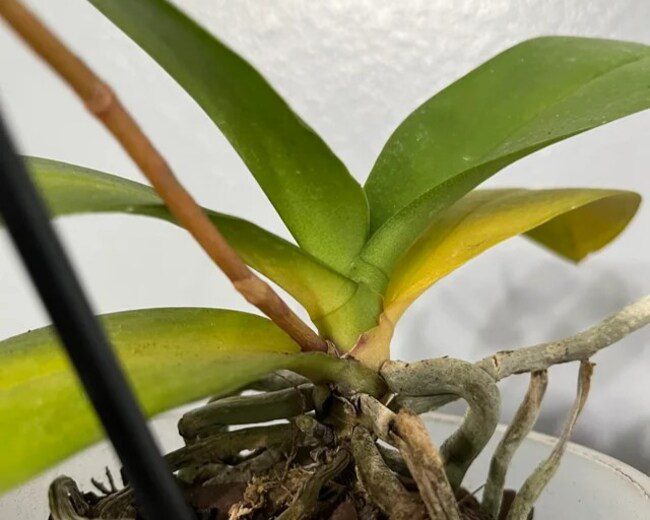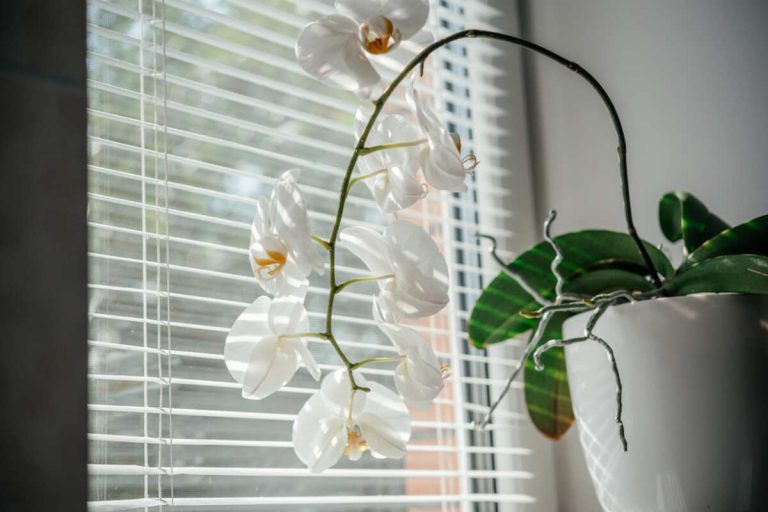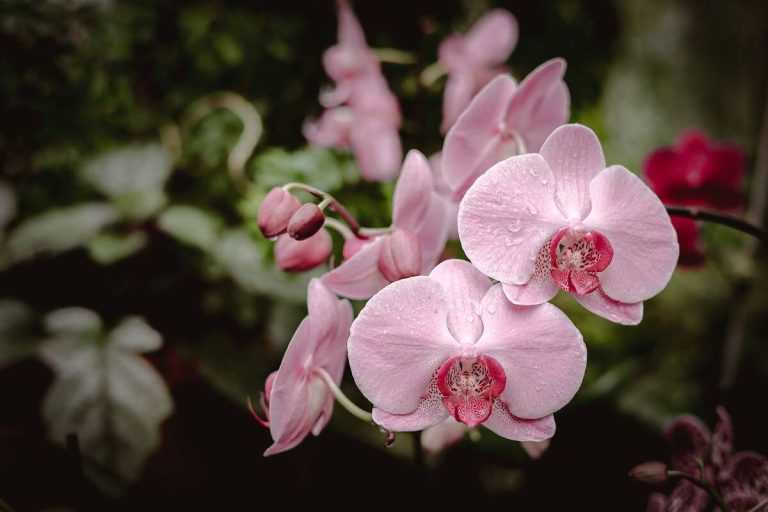How To Revive An Orchid: The Best Tips And Tricks

Orchids have beauty and grace; these plants are considered one of nature’s finest wonders. Although these glooming flowers can be a hassle to take care of, leading to distressing situations where they begin to decline and wither away. This article will provide you with a complete guide on how to revive an orchid. We will also discuss some common issues that lead to this problem and how to tackle them.
Reviving an orchid plant is possible with dedicated care and proper attention. The first thing you need to do is to find the issue that is causing the problem in the first place. Adjusting the water routine, light conditions, pruning, cleaning the plant, and providing adequate humidity might help revive your orchid plant completely.
Most Common Reasons Why Orchids Die
Before we talk about how to revive your orchid plants, it’s crucial to understand the common reasons why orchids die. Several issues result in the death of an orchid plant. Some of the common factors include overwatering, inadequate lighting, pests, and diseases.
Overwatering and underwatering
You should know that orchid plants have specific watering requirements. Deviation of their needs can lead to overwatering of plants and eventually death. Dehydration is another important factor that can lead to dehydration. You should avoid such problems and keep track of the watering schedule to ensure their health and safety.
Read more: Are Orchids Poisonous: How To Identify These Harmful Plants
Inadequate light
Inadequate light can also hamper your plant’s ability to photosynthesize. This is a leading problem with indoor plants and needs to be dealt with immediately. Inadequate lighting can also lead to weak growth and poor blooming. Keep your plant near a light source or a pet’s terrarium to allow it to photosynthesize properly. Orchids make excellent decorative plants for many reptiles, including leopard geckos. In this way, you will be able to preserve your plant while decorating your pet’s enclosure.
Recommend product: VIPARSPECTRA XS1000 LED Grow Light


Improper potting medium
Improper potting medium is another leading cause for orchid plants to die out. Providing the wrong type of potting mix can prevent adequate drainage and aeration, causing stress to the plant’s roots.
Pests and diseases
Orchids are vulnerable to different pests and diseases such as aphids, mealybugs, and fungal infections. You should pay keen attention to their overall well-being on day to day basis to keep them in healthy condition. These infections and diseases can weaken your plant’s roots and cause it to rot.
How To Revive An Orchid
Reviving an orchid plant in bad condition requires a systemic approach and a specific care requirement. Here are a few things that you can do to save your orchid.
Drooping orchid
Drooping orchids are a common issue faced by many plant owners. This occurs when the orchid plant has wilted or limp leaves. This symptom can be a sign of overwatering, root rot, or poor light conditions. To solve this problem, gently remove the orchid plant from the pot and observe its roots. Trim away any mushy or blackened roots to prevent further decay.
Now, repot the orchid in a well-draining mix, ensuring the roots stay healthy and preventing any further damage. Adjust the watering routine so that the plant is left to absorb the water from the soil between watering sessions. You should also ensure that the orchid gets the required lighting to grow comfortably.
Burned roots
If your orchid plant exhibits scorched or sunburned roots, it has likely been overexposed to direct sunlight. The first thing that you should do in this case is relocate the orchid plant to a shadier spot with bright indirect light. You should also trim away any damaged or burned roots. Burnt roots may appear brown or hash-brown in colour.
It is also important to avoid fertilizing your orchid until the roots have healed. Fertilizing can stress the plant and make it more susceptible to root burn.
Increasing the humidity around the plant during the recovery process will help the revival process.
Flowers dropping off
Seeing the flowers drop off early can be disheartening for many owners. This can be caused by temperature fluctuations or a sudden change in the plant’s environment. You should provide the right temperature and humidity levels for your orchid plant to keep it in a healthy state.
Providing and maintaning a stable environment for your orchid plant is crucial for its overall growth and well-being. Avoid placing your orchid plant near a heater or air conditioner, as these temperatures can prove fatal for your orchid plant. Exposing the orchid to cold drafts or extreme temperature swings can lead to flowers dropping off and should be dealt with immediately.

Other cases
Other signs of orchid plant decay include yellowing leaves, abnormal growth patterns, or signs of pests and diseases. You should take action according to your plant’s condition and find its root cause. You should also remove any damaged or unhealthy parts from the orchid to prevent further damage.
You should also follow a strict care routine during the recovery stage of the plant itself. To avoid overfertilizing, you should only fertilize your orchid every 2-4 weeks during the growing season. You should also use a balanced fertilizer diluted to half strength. Moreover, also ensure you treat pests and diseases promptly, as they can spread rapidly, leading to the death of your orchid plants. Visit a botanist if you need any help or suggestions for the revival of your orchid plant.
Final Thoughts
Reviving an orchid plant successfully requires patience, observation, and prompt action. By understanding the common reasons orchids die and following the various steps to revive them, you can turn the fate of your struggling orchid around.
Remember to provide your orchid plant with the necessary care, an apt environment, and professional help whenever needed. With proper care and dedication, your orchid plant will flourish once again.
FAQs









